
V. Weaponry and Equipment
Generally speaking, JSDF expenditure on weaponry acquisition in 2012 maintained the level of the previous year. It also followed the general trend of the recent years, emphasizing the development of naval and air weapons systems. According to Japan’s National Defense 2012,the JSDF spent 756.5 billion yen on weapons and systems acquisition, 3% less than that in FY 2011, and accounting for 16% of national defense budget. Among it, ship building cost 172.8 billion yen, which is a rather significant increase from last year, indicating Japan’s intention to strengthen its maritime power. Aircraft purchase cost 136 billion yen. In FY 2012, the JSDF spent 102.7 billion yen on equipment R&D, 1% higher than that of last year.
The main characteristics and changes in JSDF weapons development in 2012 are as follows:
A. Strengthening maritime surveillance and deterrence with a focus on preparation for “island invasion”. To that end, Japan has deployed FPS-5 radar in Okinawa, and is stepping up R&D of FPS-7 anti-stealth radar. The new generation of radar is significant in that its antenna is fed signals from several feed horns arranged in a vertical stack, making it much better than its predecessors in terms of agility, reconnaissance range and responsiveness. It is considered a pillar equipment for coastal monitoring and surveillance, especially that of the “Southwestern islands”. In 2012 Japan also began R&D of two new weapons, one is a new type of torpedo to replace existing torpedoes on Japanese submarines, and the other is the Variable Depth Sonar to improve reconnaissance and anti-submarine operations. Meanwhile, Japan is continuing with the R&D of unmanned aerial vehicles (UAV). It has also purchased two sets of SSM-1 to enhance anti-ship capabilities. The JMSDF has been commissioning new warships at a planned pace. In March 2012, Destroyer Akizuki, the lead ship of the new Akizuki-class destroyers (with a 5,000-ton displacement), and Submarine Kenryu (with a 2,900-ton displacement) were commissioned. Destroyer Akizuki is a general-purpose destroyer with enhanced Anti-Aircraft Warfare capability. The remaining three ships of the same class, namely, Destroyers Teruzuki, Suzuzuki, and Fuyuzuki will be commissioned respectively in 2013 and 2014. Kenryu is Japan’s fourth AIP-equipped submarine, and as Hakuryu which was commissioned last year, it has superior submerged maneuverability and stealth capabilities. According to the 2012 budget, Japan also plans to construct a helicopter carrier with a 19,500-ton displacement to replace the Shirone-class Destroyer Kurama which is to be decommissioned in 2016. In terms of carrier-borne aircraft, the JMSDF purchased 3 MCH-101 minesweeping/transportation helicopters, the largest purchase in recent years, and additional SH-60K anti-submarine helicopters.
 |  |
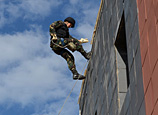
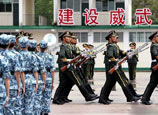
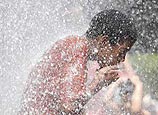
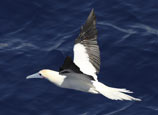

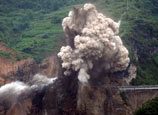



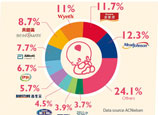






 Elder couples celebrate golden wedding anniversary in Hangzhou
Elder couples celebrate golden wedding anniversary in Hangzhou


![]()
